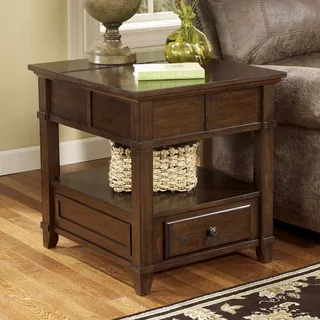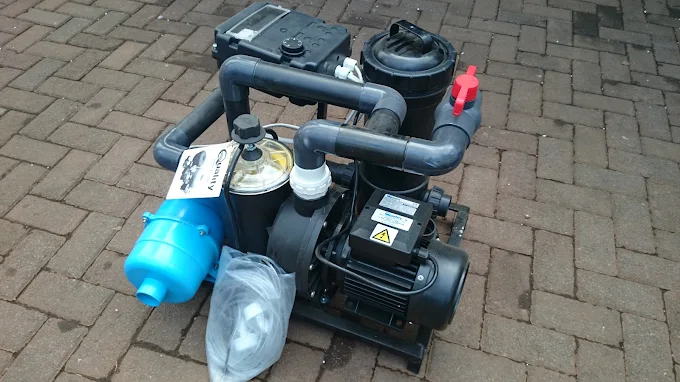
Designing a beautiful and functional living room involves more than just selecting a stylish sofa or eye-catching rug — it’s the smaller furniture pieces, like end tables and coffee tables, that tie the entire space together. These often-overlooked items can either elevate your design or disrupt it if they’re mismatched. Finding the perfect pairing between your end tables and coffee table ensures your living room looks balanced, thoughtful, and cohesive. But how do you achieve this? Do you have to buy a matching set, or is it okay to mix materials and shapes?
In this article, we’ll explore practical tips for harmonizing your end tables with your coffee table, making sure they complement each other without feeling overly matched or clashing in style. We’ll cover how to balance shapes, materials, colors, and sizes — all while considering your room’s overall design and function. If you’re currently shopping for new pieces, understanding the End & Side Tables price in United States can also help you make smart decisions that fit your budget and style.
Why Cohesion Matters in Living Room Design
A living room with mismatched furniture can feel disjointed and chaotic. On the other hand, a room where the pieces relate to each other feels curated and polished. Cohesion doesn’t necessarily mean everything has to match perfectly — in fact, too much matching can make a room feel flat or overly staged. Instead, you want to create visual connections between your coffee table and end tables so they feel like part of the same story.
This connection can come through repeated materials (like wood or metal), similar shapes (like rounded edges), shared color palettes, or even consistent design styles (such as modern, rustic, or traditional). When done well, your tables will complement the room’s style, balance the seating arrangement, and add both form and function to your living space.
Pairing by Material: Creating Harmony or Contrast
One of the easiest ways to create cohesion is by pairing tables with similar materials. For example, if you have a wooden coffee table, you can choose wooden end tables to create a natural, cohesive look. The wood doesn’t have to be an exact match — combining lighter wood with darker wood can still work if the tones complement each other.
Alternatively, you can mix materials deliberately for contrast. For instance, a glass coffee table can pair beautifully with metal end tables, offering a blend of lightness and industrial edge. Just make sure the materials share a design language or finish that links them visually — such as using matte black metal legs on both the coffee table and end tables.
Before you start shopping, it’s worth checking the latest End & Side Tables prices in United States, as the material can significantly impact the cost.
Matching Shapes: Round, Square, or Something in Between?
Shape plays a key role in pairing tables successfully. If your coffee table is round, you might echo that curve in your end tables — think round side tables or drum tables — to create softness and flow. Alternatively, you can balance a rectangular coffee table with round end tables for visual contrast.
Rectangular or square coffee tables often look best with angular end tables, while round or oval tables pair well with softer, rounded shapes. However, if your room has a lot of sharp corners already (like a square rug or boxy sofa), using round tables can help break up the rigid lines.
Playing with Color and Finish
Color and finish help tie pieces together visually, even if they’re made from different materials. For example, a black metal coffee table can pair beautifully with black-legged wooden end tables. Similarly, tables with a consistent finish — like a matte or glossy surface — will feel more connected, even if their materials differ.
If you want to mix colors, use a common accent or undertone to bridge the pieces. For instance, pairing a walnut coffee table with brass-legged end tables works beautifully if you include brass decor on the coffee table or nearby shelving. Always step back and look at the room as a whole — the tables should complement the larger design palette.
Considering Size and Scale
A common design mistake is pairing tables that are out of proportion with each other or the room. If your coffee table is large and chunky, tiny delicate end tables may look mismatched. Instead, aim for pieces that feel balanced in scale and proportion.
Also, consider the table height. Ideally, end tables should be roughly the same height as the arm of your sofa, while coffee tables should sit slightly lower than the seat height. When the sizes are balanced, the room feels more intentional and polished.
FAQs: Pairing End Tables and Coffee Tables
Q1: Do coffee tables and end tables have to match?
A: No! While matching sets are an easy solution, mixing pieces can add character. Just be sure they share at least one visual element — like material, color, or style — to create cohesion.
Q2: Can I mix modern and traditional tables?
A: Absolutely. Mixing styles can create an eclectic, layered look. Balance is key: combine sleek modern shapes with classic details, or blend rustic textures with contemporary metals for a curated feel.
Q3: Should my end tables be taller than my coffee table?
A: Typically, yes. End tables usually sit level with the sofa arms, while coffee tables are slightly lower to avoid blocking sightlines. This difference in height creates a natural flow in the seating area.
Q4: How many end tables should I have?
A: It depends on your seating arrangement. Most living rooms have one or two end tables, placed at the ends of sofas or next to armchairs. Avoid overcrowding the space — sometimes less is more.
Q5: Can I pair a glass coffee table with wooden end tables?
A: Yes! Mixing glass and wood creates a beautiful blend of textures. Just ensure there’s a unifying element, such as similar leg shapes, finishes, or color tones.
Creating a Cohesive Living Room Look
Pairing your coffee table and end tables is about finding the right balance between matching and mixing. Start by identifying your room’s core design style — whether it’s modern, rustic, industrial, or traditional — and select tables that support that theme. Use materials, colors, and shapes to create connections between the pieces, and pay close attention to scale and proportion.
Before making a purchase, it’s wise to browse current End & Side Tables prices in United States so you can set a budget and find the best options for your home without overspending.
Conclusion
Your living room’s success lies in the details, and the relationship between your coffee table and end tables plays a major role in creating a unified, stylish space. Whether you go for matching sets or thoughtfully curated contrasts, the key is ensuring visual balance, functional harmony, and a design that reflects your personal taste.
For homeowners looking to upgrade their space with affordable, stylish, and well-crafted options, My Signature Home Furniture is one of the best places for the lowest End & Side Tables prices in United States. Their wide selection ensures you’ll find the perfect combination of pieces to create a cohesive and beautiful living room — all without breaking the bank.




